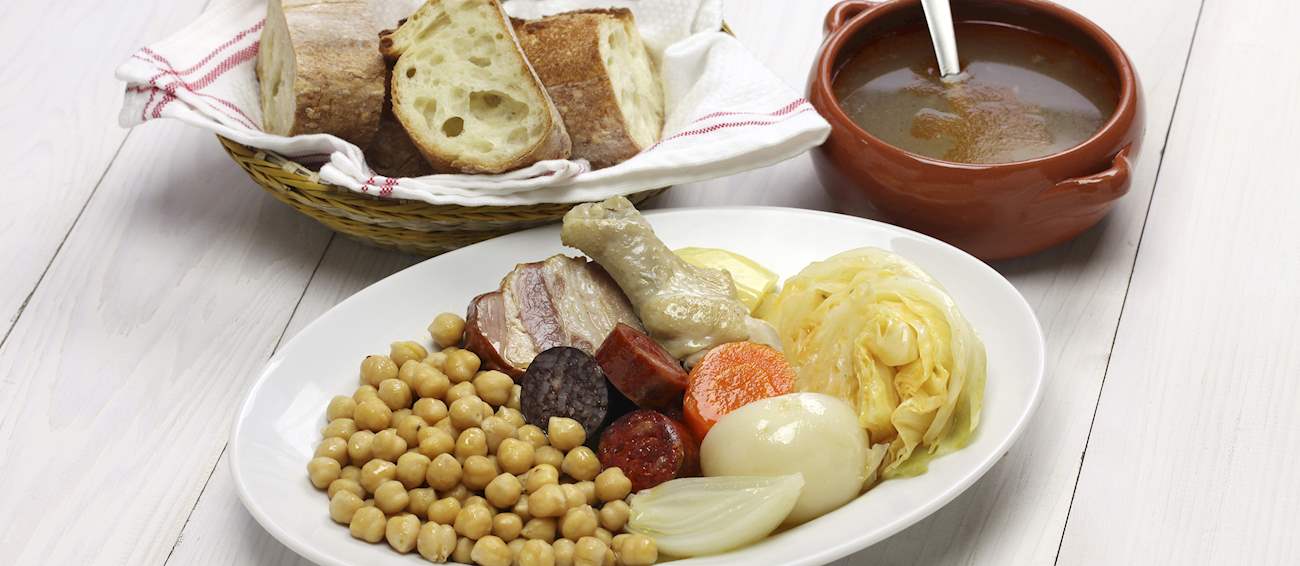Cocido madrileño
One of the most emblematic dishes of Madrilenian cuisine known as cocido madrileño is a hearty meat and chickpea stew whose origins can be traced back to the medieval-era Castilla La Mancha. Some food historians claim that this one-pot meal evolved from a peasant dish called olla podrida Manchega, but wasn't named cocido madrileño until the 17th century.
However, most sources agree that the famed dish has its roots in the Sephardic stew called adafina–a Shabbat kosher meal based on chickpeas, vegetables, and either hard-boiled eggs or meat such as lamb, veal, beef, or chicken. With the arrival of the Inquisition, feared of prosecution by the Catholic priests who roamed the streets of Madrid at the time–in search of both Jewish and Muslim cookery–the converted Spanish Jews called Marranos started incorporating pork into their adafinas to prove themselves as Christians.
Over time, with the addition of lard, bacon, Serrano ham, chorizo (pork sausages) and morcilla (blood sausages), adafina reportedly became the dish that is now known as cocido madrileño. This substantial meal is traditionally served in three separate vuelcos or courses: the first one is a rich, flavorful stock with added noodles; the second vuelco consists of chickpeas and vegetables, while the meat is dished out as the third course.
Once commonly consumed during winter, cocido madrileño can nowadays be found prepared throughout the year in many of Madrid's restaurants and taverns.




















